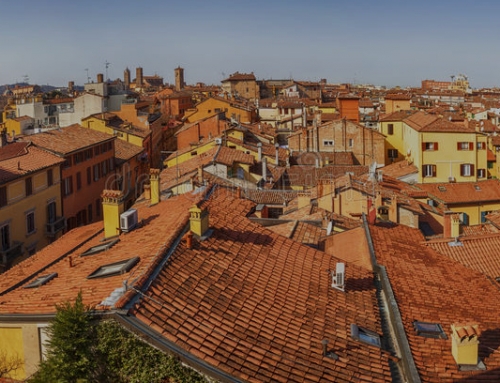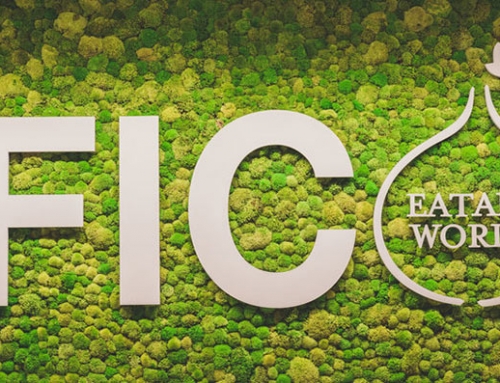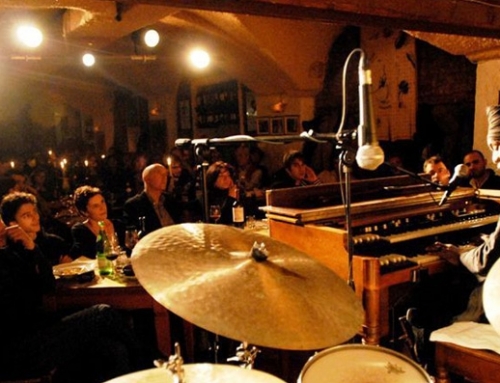The region of Emilia Romagna is widely regarded as the culinary and gastronomic capital of Italy. The area is home to so many delicious specialities that it is easy to forget the nearby sights and just eat instead. When you go to Bologna, you will see why Bologna is nicknamed La Grassa (literally translated as “the fat”!). Its culinary tradition is famous all over the world thanks to several traditional recipes which represent some of the best treasures of Italian cuisine.
When you visit Bologna you must bear this in mind: in Italy cooking is an art, and you are in a city full of masterpieces. Bologna is mother to many typical Italian dishes. It is said that the city’s cuisine has evolved along with the university, the oldest in Europe, and still preserves traces of the influence of the people who populated the city in the Middle Ages. Walking through the streets of the centre of Bologna, you will find lines of shops selling typical products from Emilia-Romagna.
There are many typical dishes in Bologna, but here we will show you the ones you have absolutely got to try!
Crescentine fritte
Fried bread with salami and mortadella, a very special kind of cured meat from Bologna. The dough used for this recipe is very similar to bread or pizza dough. You can either make them “empty” to eat with cold cuts or cheese, or fill them with ham and cheese (or whatever you want) before frying them. In Bologna they are called crescentine but if you move towards Modena, Piacenza, Reggio Emilia or Ravenna, you will find them with other names like gnocco fritto, pizza fritta, torta fritta, pinzino. Some ingredients of the dough may vary – even just slightly – depending on the area – as with all traditional dishes, each family has its own recipe.
Ragù alla bolognese
One of Italy’s most famous and iconic dishes – you can order it all over the world, but in Bologna you will have the chance to taste the most authentic ragù pasta sauce you will ever come across. Ragù is not eaten with spaghetti (contrary to the rest of Italy), but with tagliatelle, a tasty fresh pasta made with flour and eggs and which is “stretched” into 7mm-wide strips; they are eaten served with a thick ragù of onions, carrots, pork, veal, and a little bit of tomato.
Cotoletta alla bolognese
Made with prosciutto and Parmesan cheese, these delicious veal cutlets will melt in your mouth. They are a richer version of the famous Cotoletta alla Milanese. Veal cutlets are dipped in beaten egg, coated in breadcrumbs, and fried in butter until golden. While the Milanese version would be now ready to be eaten, chefs from Bologna add a slice of prosciutto and one of cheese on each; then they heat them in the oven until the cheese melts, add a small spoon of tomato sauce over each, and serve them hot. The version with truffle is particularly rich. Once out of the oven, the escalope is covered with truffles (or rather trifola, a small, extremely fragrant white truffle from the Apennines surrounding Bologna).
Tortellini in brodo
The pasta that has become a favourite worldwide — the little dumpling filled with cheese or, in some cases, meat was invented in Emilia-Romagna. They are small pieces of ring-shaped pasta that have been wrapped around a filling, usually a mix of meat (pork loin and Parma ham) or cheese. Tortellini are usually served with the broth from bollito, but they can also be eaten with ragù or panna (milk cream). A similar pasta, tortelloni, are the bigger version of tortellini. The broth for tortellini is one of the fundamental elements in this great Italian dish, offering a warm shelter from the wintery cold and bringing warmth and comfort to the Christmas table.
Mortadella
This is where we get our word “bologna” from… but we promise you, the supermarket lunchmeat is just a bastardised version of this spiced pork from Bologna!
The most appetising and typical cured meat of this incredible city is Mortadella. What Italians call Mortadella is what is called Bologna sausage in other countries. This meat is so strongly tied to the image of its city of origin that abroad it has lost its original Italian name. The name appears to have been coined in ancient times – it may even be Roman. The mortar was the tool with which the pig’s parts were chopped up before being mixed with lard and spiced to make sausages. However, the most important thing is mortadella’s rich and intense flavour.
It is an oversized Italian sausage made of finely hashed or ground, heat-cured pork sausage, which contains (yp to at least 15%) small cubes of pork fat (prevalently the hard fat from the neck of the pig). It is flavored with spices, including whole or ground black pepper, myrtle berries, nutmeg and pistachios. This is a a prized meat that has been recognized by the EU and given a PGI (Protected Geographical Indication) rating. The first written evidence of something similar to mortadella dates back to the 14th century – much to the delight of the University of Bologna students who have been there since 1088!
There is a rich cured-meat culture in Emilia Romagna – however, the people of Bologna are very proud of their mortadella. You will often see it served alongside other regional favourites, such as Parma’s Prosciutto Crudo di Parma and Parmigiano Reggiano.





